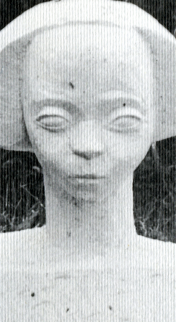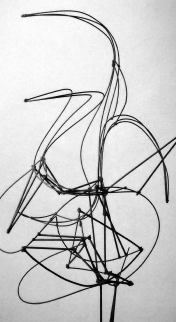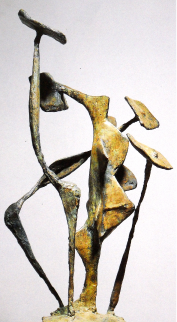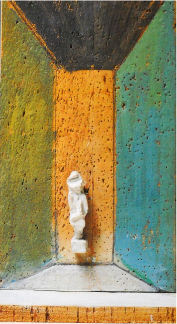(1911-1940)
‘Margaretha Farmer is fascinated by the construction of a half-timbered house opposite the family farm: ‘This profoundly affected me, as by observing the masons’ daily efforts, I understood that it was possible to create new forms, with one’s own hands. Up until then, nothing around me had changed, but I saw a house develop chamber by chamber, like a sort of monumental sculpture, and the smell of plaster remains closely associated with this first impression.’'
'Isabelle Waldberg unveils the sculpture started four years earlier in the secrecy of her studio. The return to plaster took place in parallel with the constructions in iron. After the shock of returning to Paris, this city ‘clinging to the ground’, the artist reconnected with a material that was familiar to her.’
‘Isabelle Waldberg obtains beech wood rods in a little hardware shop where she finally finds the ideal material. These sticks are called ‘dowels’. Making of a bas-relief. Development from this moment, to a process of putting the rods in boiling water. They are then put into shape before being attached to the holds. The artist makes wall constructions and suspensions characterised by a ‘geometrising’ style.’
‘In this period Isabelle Waldberg makes objects in cork and patinated plaster, that contrast sharply with the other works. She ‘sets up’ L’homme seul (‘The Man Alone’), L’homme situé I and II (‘The Man Situated I' and 'II’) , Animal and Saint-Sebastien (‘Saint Sebastian’), where every idea, every material helps to create a fragile and inspired universe. A subtle play between colors is at the heart of the compositions: from white to ochre, from blue to soft green.’




